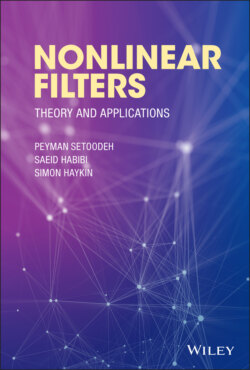Читать книгу Nonlinear Filters - Simon Haykin - Страница 14
2 Observability 2.1 Introduction
ОглавлениеIn many branches of science and engineering, it is common to deal with sequential data, which is generated by dynamic systems. In different applications, it is often desirable to predict future observations based on the collected data up to a certain time instant. Since the future is always uncertain, it is preferred to have a measure that shows our confidence about the predictions. A probability distribution over possible future outcomes can provide this information [8]. A great deal of what we know about a system cannot be presented in terms of quantities that can be directly measured. In such cases, we try to build a model for the system that helps to explain the cause behind what we observe via the measurement process. This leads to the notions of state and state‐space model of a dynamic system. Chapters 3–7 and 9–11 are dedicated to different methods for reconstructing (estimating) the state of dynamic systems from inputs and measurements. Each estimation algorithm has its own advantages and limitations that should be taken into account, when we want to choose an estimator for a specific application. However, before trying to choose a proper estimation algorithm among different candidates, we need to know if for a given model of the dynamic system under study, it is possible to estimate the state of the system from inputs and measurements [9]. This critical question leads to the concept of observability, which is the focus of this chapter.
